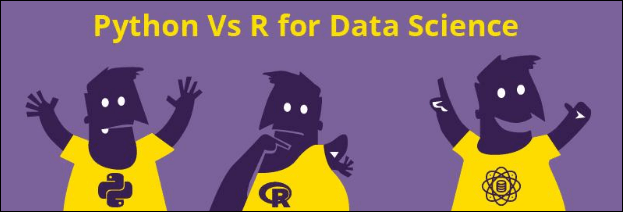(Sponsors) Get started learning Python with DataCamp's free Intro to Python tutorial. Learn Data Science by completing interactive coding challenges and watching videos by expert instructors. Start Now!
Python Vs. R for Data Science
Updated on Aug 11, 2023

Data Science is the chief requirement for every IT person in today’s digital space. The increased amount of data, strong computing technologies, decisions based on analytics and insights, all put together, have made Data Science a very important domain.
As per one of Forbes reports, ‘America’s best job is Data Scientist with an average salary of $110,000’ per annum. Furthermore, looking at the huge requirement which is increasing continuously, McKinsey predicted a 50 percent gap in the supply of Data Scientists versus the demand for them in the upcoming years. So now it’s the right time to get Data Scientist Course and excel in your career.
There are two powerful analytics languages for Data Science, namely, Python and R. Both are open-source languages, where R is designed considering the statisticians, while Python is very popular for its easy-to-understand syntax. Python is a general-purpose language, and R is mainly developed for statistical analysis. R is focused on user-friendly data analysis and graphical models; however, Python focusses on code readability and productivity. Let’s understand in detail how and when R and Python are used for Data Science activities and which language is more preferred.
When Are R and Python Used in Data Science? #
Whenever data analysis requires separate computing or analysis on individual servers, R can be used. R is well known for explanatory work and it is used for data analysis tasks, since it performs great while dealing with huge numbers. R is also used for Big Data solutions.
Python comes in the picture when data analysis needs integration with web applications and in cases where statistics must be incorporated in the production database. Python also implements algorithms.
Advantages and Disadvantages of the R Programming Language
Pros
- R has a great visualization ability.
- R has a strong ecosystem consisting of innovative packages.
- R community is actively supporting its users.
- R is designed by statisticians with an objective of keeping statisticians as its primary end * users. They exchange concepts and ideas using R codes or packages. They do not need a computer science background for this purpose.
Cons
- R has a poorly written code which makes it very slow.
- R has a non-trivial learning curve.
Advantages and Disadvantages of the Python Programming Language #
Pros
- The IPython Notebook makes it easy to work with data and Python. It is easy to share notebooks without installing them. This reduces the time taken for code organizing, note files, and the output. This enables you to do more real work.
- As said earlier, Python is a general-purpose language, which gives a relatively flat learning curve.
- The speed of writing programs in Python is high.
- It has a low-barriers-to-entry testing framework which allows good coverage for testing.
- Python is a multipurpose language which brings together various people from different backgrounds.
- Python has great in-built visualization libraries like Seaborn, Pygal, Bokeh, etc. However, the visualizations are complex in Python.
Cons
- Python is a challenger to R
- Python does not offer any alternative solution to many of the essential R packages
How to Decide on the Best Language for Data Science #
Choosing the right language for your Data Science activities is a tricky job. However, if you can answer the following questions, it will assist you in making a smart decision:
- What are your requirements?
- What kind of problems you need to solve using the language?
- What are the most commonly preferred tools in your field?
- What is the net cost of learning a programming language?
- Do you know any other language which can nearly fulfill your requirements?
- Do you want intense visualizations and graphics?
Python is a versatile language which can be used for a variety of computer science tasks. On the other hand, R is a language which is specifically designed for data analysis. If you are aiming to have a high career in Data Science, it is good to know R language.
As mentioned above, R is better in terms of visualizations and graphics. Often, Data Scientists and Data Analysts look for robust data visualization tools. Because, they find it easy to identify trends, and patterns from the visual presentations. If your requirement focuses more on visualizations, R will the perfect choice for you.
The R versus Python debate is endless. Here, you can think out of the box and consider learning both programming languages, and thus you can utilize them with respect to their strengths. This will improve your skills as a Data Scientist.
Intellipaat is a renowned e-learning platform that provides the best online courses in Data Science, Python, R, and many other cutting-edge technologies. Each course is designed considering the fast-paced industry requirements. You can visit our website for more insights.
Sonal Maheshwari:
Sonal Maheshwari has 6 years of corporate experience in various technology platforms such as Big Data, Data Science, Salesforce, Digital Marketing, CRM, SQL, JAVA, Oracle, etc. She currently writes for intellipaat.com, a leading professional training provider. Intellipaat Software Solutions and strives to provide knowledge to aspirants and professionals certification training like Big data, AI, Data science and python certification courses.
Other Tutorials (Sponsors)
This site generously supported by DataCamp. DataCamp offers online interactive Python Tutorials for Data Science. Join over a million other learners and get started learning Python for data science today!

View Comments